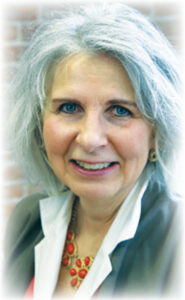By Deborah Dittner
 If any of you are “Outlander” fans, you will remember these words as part of the quote of the Celtic wedding vows.
If any of you are “Outlander” fans, you will remember these words as part of the quote of the Celtic wedding vows.
I use this quote not only as an “Outlander” fan but also because our bones are the support of our bodies. Much like the foundations of a marriage, paying attention to your bodily structure requires much consideration.
To return to today’s discussion of “bone of my bone,” you need to look at your body and the best ways to care for your bones. It is never too late to be diligent and work to improve your bodily structure reducing the risk of falls and fractures. With aging, you want your bones to be as strong as possible. If you haven’t been kind to your body, it is never too late to begin. Osteoporosis, a condition in which bones become weak and brittle, can be prevented keeping you strong and self-reliant.
Physical movement is a must. Exercise and physical movement are an important lifestyle change and a necessary one in taking care of you in the best way possible.
Do establish achievable goals and be realistic. A fitness assessment can help determine your goals after examining the results.
Speak with your healthcare provider or physical therapist or personal trainer to point you in the direction of a good assessment tool, and follow through with the results and necessary changes.
For seniors (and actually everyone), exercise is anti-aging. Exercise will help lubricate joints, increase mobility and decrease overall inflammation.
Resistance training and strength training boosts the growth of new bone tissue. By adding 30 minutes three or four times a week of simple movements such as squats and pushups (using your own body weight) and bicep curls (using weights starting with filled water bottles or soup cans and progress to other handheld weights), you will improve not only bone but overall health as well. Working with a trained professional, especially if you have osteoporosis or other bone disease, is a must. Modifications can always be made and will help strengthen you as you move forward. Cardio activity such as brisk walking and hiking can also support the building of new bone growth.
Throughout physical movement you want to also work on maintaining good balance and proper posture.
Yoga comes in a variety of styles and one pose that assists in balance is tree pose. Holding tree pose for two minutes on each side daily is helpful. A good time to do tree pose is while brushing your teeth — one side in the morning and the other in the evening. Plank is another movement increasing core strength (abs, back, hips and butt), lower back strength and encourages good posture.
Of course, you can’t talk about bone health without eating whole nutrient-dense foods. Bone building nutrients needed every day consist of vegetables, fruits, whole grains, healthy fats and protein.
Some examples: dark leafy greens, beans and canned fatty fish such as salmon (high in calcium); eggs and other fatty fish (high in vitamin D — don’t forget to get out in the sun, too!); nuts, seeds, dark leafy greens and fatty fish (great sources of magnesium). Eating a variety of plant foods also aids in good gut bacteria. Eating anti-inflammatory foods such as berries helps in supporting bone heath as well. If you’re eating enough food, you are more than likely getting enough protein. To make sure of your nutritional needs, consult with a health coach or nutritionist to discuss what you eat daily and what you can add to make your nutrition top notch in supporting your bone health.
Maintaining physical activity and eating whole nutrient-dense foods will provide you with the assurance to do everything you want to do for your long life ahead.
Be patient with yourself as results don’t happen overnight. Encourage a buddy to join with you — the more the merrier!
 Deborah Dittner is a family nurse practitioner and health consultant. Her mission is to transform as many individuals as possible through nutrition and lifestyle changes. www.debdittner.com
Deborah Dittner is a family nurse practitioner and health consultant. Her mission is to transform as many individuals as possible through nutrition and lifestyle changes. www.debdittner.com
